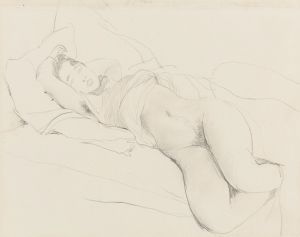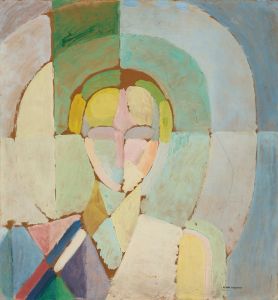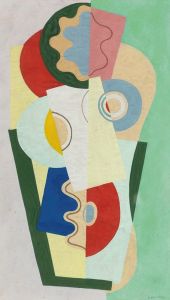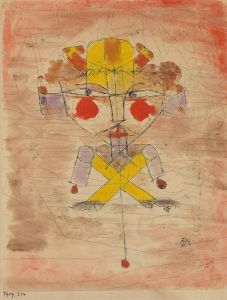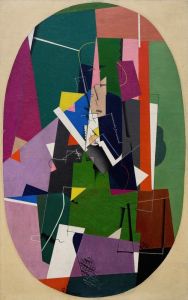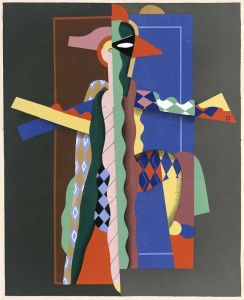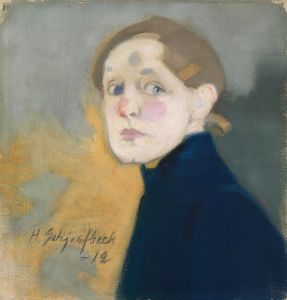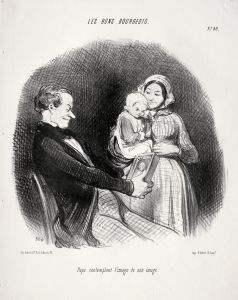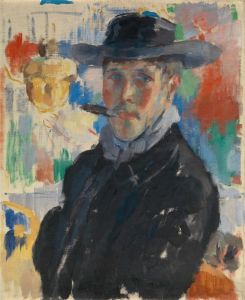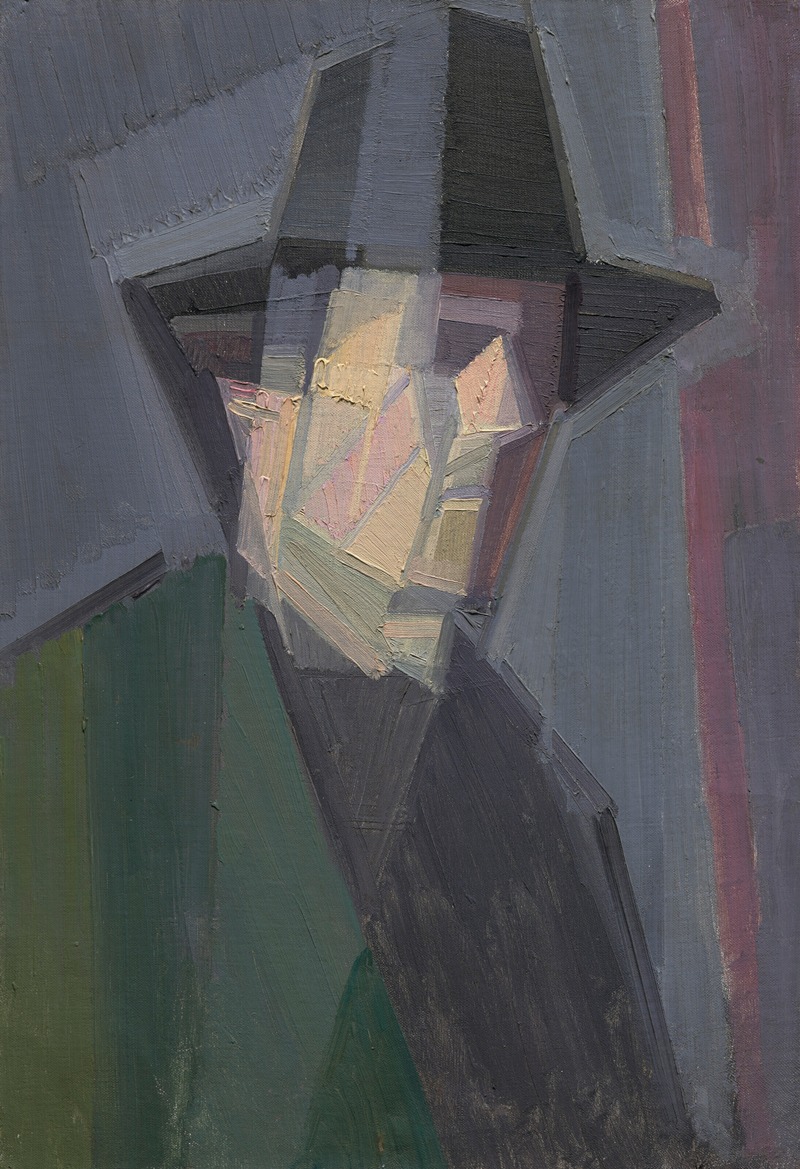
Autoportrait
A hand-painted replica of Georges Valmier’s masterpiece Autoportrait, meticulously crafted by professional artists to capture the true essence of the original. Each piece is created with museum-quality canvas and rare mineral pigments, carefully painted by experienced artists with delicate brushstrokes and rich, layered colors to perfectly recreate the texture of the original artwork. Unlike machine-printed reproductions, this hand-painted version brings the painting to life, infused with the artist’s emotions and skill in every stroke. Whether for personal collection or home decoration, it instantly elevates the artistic atmosphere of any space.
Georges Valmier (1885-1937) was a French painter known for his contributions to the Cubist movement. Among his works, "Autoportrait" (Self-Portrait) stands out as a significant piece that reflects his unique style and artistic evolution. Valmier's career spanned various phases, including Impressionism, Cubism, and Abstraction, and his self-portrait provides insight into his artistic journey and personal identity.
"Autoportrait" by Georges Valmier is a painting that exemplifies his Cubist phase, which was heavily influenced by the works of Pablo Picasso and Georges Braque. Valmier's approach to Cubism was characterized by a vibrant use of color and a distinctive geometric abstraction. Unlike the monochromatic palettes often associated with early Cubism, Valmier's works are notable for their bold and dynamic color schemes.
In "Autoportrait," Valmier employs a fragmented and abstracted representation of his own image, breaking down the facial features and forms into geometric shapes and planes. This technique aligns with the Cubist philosophy of depicting subjects from multiple perspectives simultaneously, challenging traditional notions of representation and perspective. The painting showcases Valmier's skill in balancing form and color, creating a harmonious yet complex composition.
Valmier's use of color in "Autoportrait" is particularly striking. He often utilized a palette of bright, contrasting colors to create a sense of depth and movement within the composition. This approach not only highlights his mastery of color theory but also sets his work apart from other Cubist artists who tended to favor more subdued tones. The vibrant colors in "Autoportrait" contribute to the overall dynamism of the piece, drawing the viewer's eye across the canvas and inviting them to engage with the multiple facets of the subject.
Georges Valmier's artistic career was relatively short, as he passed away at the age of 52. Despite this, his contributions to the Cubist movement and his exploration of abstraction have left a lasting impact on the art world. His works, including "Autoportrait," continue to be studied and appreciated for their innovative approach to form and color.
Valmier's "Autoportrait" is not only a reflection of his artistic style but also a personal exploration of identity. By choosing to depict himself through the lens of Cubism, Valmier aligns himself with the avant-garde movement of his time, positioning himself as both an observer and a participant in the evolving landscape of modern art. The painting serves as a testament to his creative vision and his ability to push the boundaries of traditional artistic conventions.
In summary, "Autoportrait" by Georges Valmier is a significant work that encapsulates the artist's Cubist style and his innovative use of color and form. It offers a glimpse into Valmier's artistic identity and his contributions to the broader Cubist movement. Through this self-portrait, Valmier not only portrays himself but also asserts his place within the avant-garde art scene of the early 20th century.





